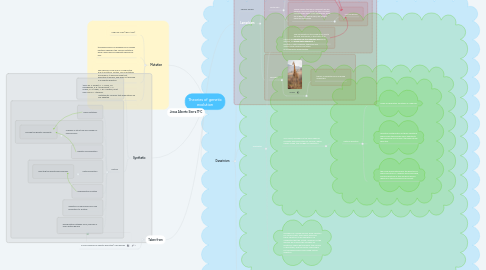
1. Mutation
1.1. Hugo de Vries (1840-1935)
1.2. the phenomenon of appearance of sudden heritable changes; the various mutations were called new and separate species by him.
1.3. new species could arise in a single step due to mutation. Further, since mutations are random, it was presumed that evolution is random, and does not proceed in a definite direction.
1.4. mutationists consider that populations are pre-adapted
2. Synthetic
2.1. 1930s by S. Wright, H. J. Muller, Th. Dobzhansky, R. B. Goldschmidt, J. S. Huxley, R. A. Fisher, J. B.S. Haldane, Ernst Mayr and G. L. Stebbins.
2.2. Factors
2.2.1. Gene mutations
2.2.2. Changes in structure and number of chromosome
2.2.2.1. provide the genetic variability
2.2.3. Genetic recombination
2.2.4. Natural selection
2.2.4.1. directing the evolutionary process
2.2.5. Reproductive isolation
2.2.6. migration of individuals from one population to another
2.2.7. hybridization between races, species or even related genera
3. Taken from
3.1. 4 Main Theories of Genetic Evolution | Cell Biology
4. Jesus Alberto Sierra 11°C
5. Lamarkism
5.1. Jean Baptiste Lamarck (1744-1829)
5.2. postulates
5.2.1. Living organisms and their organs tend to increase in size during evolution.
5.2.2. New organs develop in an organism if this development is needed for its survival.
5.2.3. Those organs that are in frequent use will develop more and more, as their constant use will make them more developed, while the organs not being used, will tend to become more weak.
5.2.3.1. use and disuse
5.2.4. The modifications thus produced, due to the use and disuse, in the traits of an organism will be inherited and would accumulate with time.
5.3. Example
5.3.1. Jiraffe
5.3.1.1. theory of inheritance of acquired characters
6. Darwinism
6.1. Charles Darwin
6.2. Postulates
6.2.1. Normal reproduction by the members of a species, increases their number at a geometric rate. However, there are only limited food supplies and other environmental opportunities.
6.2.2. As a result, members of the same species compete with each other for survival, which Darwin called, the struggle for existence.
6.2.2.1. Natural selection
6.2.2.1.1. Origin of hereditary variations in a species
6.2.2.1.2. Selective multiplication of those variations which make the species more adapted to the prevailing environment through natural selection.
6.2.2.1.3. the force which determines the direction in which evolution in a species would proceed, and the direction of this influence would depend on the prevailing environment.
6.2.3. Members of a single species show variation for various traits, and Darwin assumed these variations to be hereditary. He suggested that the ‘fittest’ members of the species will ‘survive’ the ‘struggle for existence’; which he termed as ‘the survival of the fittest,’ and the factor responsible for this phenomenon was called natural selection.
6.3. Types of variation
6.3.1. Continuous
6.3.2. Discontinuous
